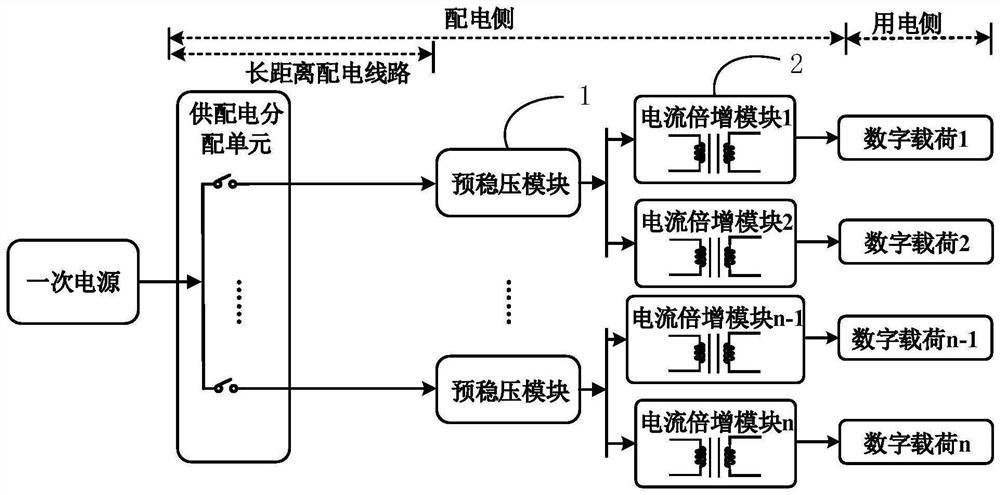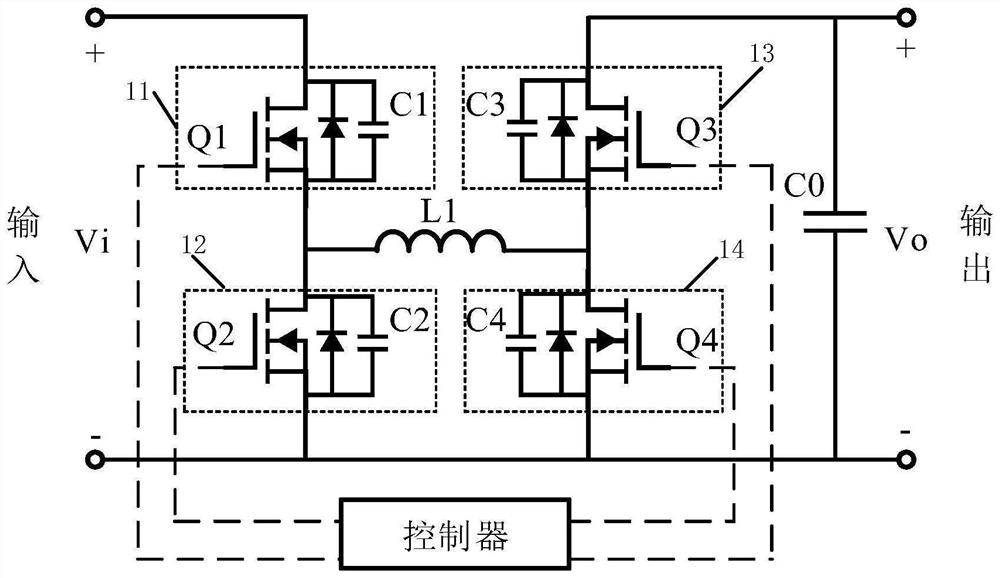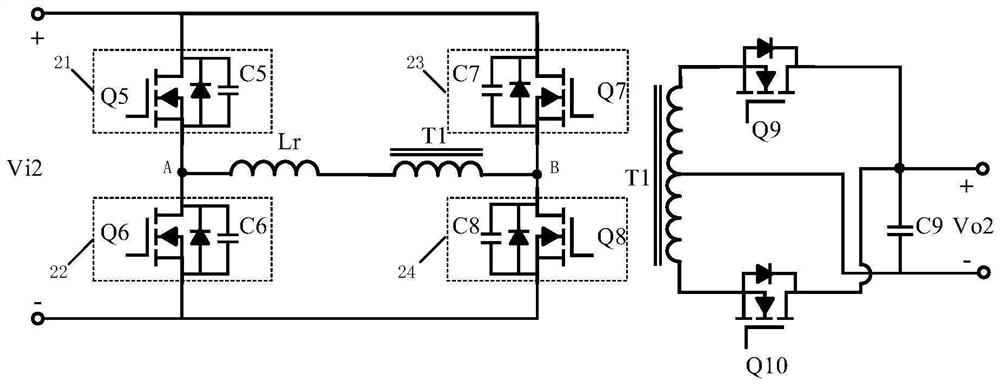Satellite-borne digital load power distribution architecture
A power distribution structure and digital technology, applied in the direction of electrical components, circuit devices, and adjustment of electrical variables, to achieve high power distribution efficiency, facilitate miniaturization, and meet power demand effects
- Summary
- Abstract
- Description
- Claims
- Application Information
AI Technical Summary
Problems solved by technology
Method used
Image
Examples
Embodiment Construction
[0027] In order to make the objectives, technical solutions and advantages of the present invention clearer, a spaceborne digital load power distribution architecture provided by the present application will be described in further detail below with reference to the accompanying drawings.
[0028] The primary bus voltage of a typical satellite is usually 24V / 48V / 100V. Some satellites use unregulated or semi-regulated control methods, and the primary bus has a certain fluctuation range, such as 28-37V, 34-42V, etc. The digital load stand-alone usually requires lower voltages such as 1V, 3.3V or 5V. From the typical voltage of the primary bus of the satellite power supply to the several-volt level voltage requirements of the digital load, it needs to go through voltage regulation links such as voltage regulation, isolation, and voltage transformation.
[0029] The voltage regulation and variable ratio power distribution architecture adopted in the present invention divides the v...
PUM
 Login to View More
Login to View More Abstract
Description
Claims
Application Information
 Login to View More
Login to View More - R&D
- Intellectual Property
- Life Sciences
- Materials
- Tech Scout
- Unparalleled Data Quality
- Higher Quality Content
- 60% Fewer Hallucinations
Browse by: Latest US Patents, China's latest patents, Technical Efficacy Thesaurus, Application Domain, Technology Topic, Popular Technical Reports.
© 2025 PatSnap. All rights reserved.Legal|Privacy policy|Modern Slavery Act Transparency Statement|Sitemap|About US| Contact US: help@patsnap.com



